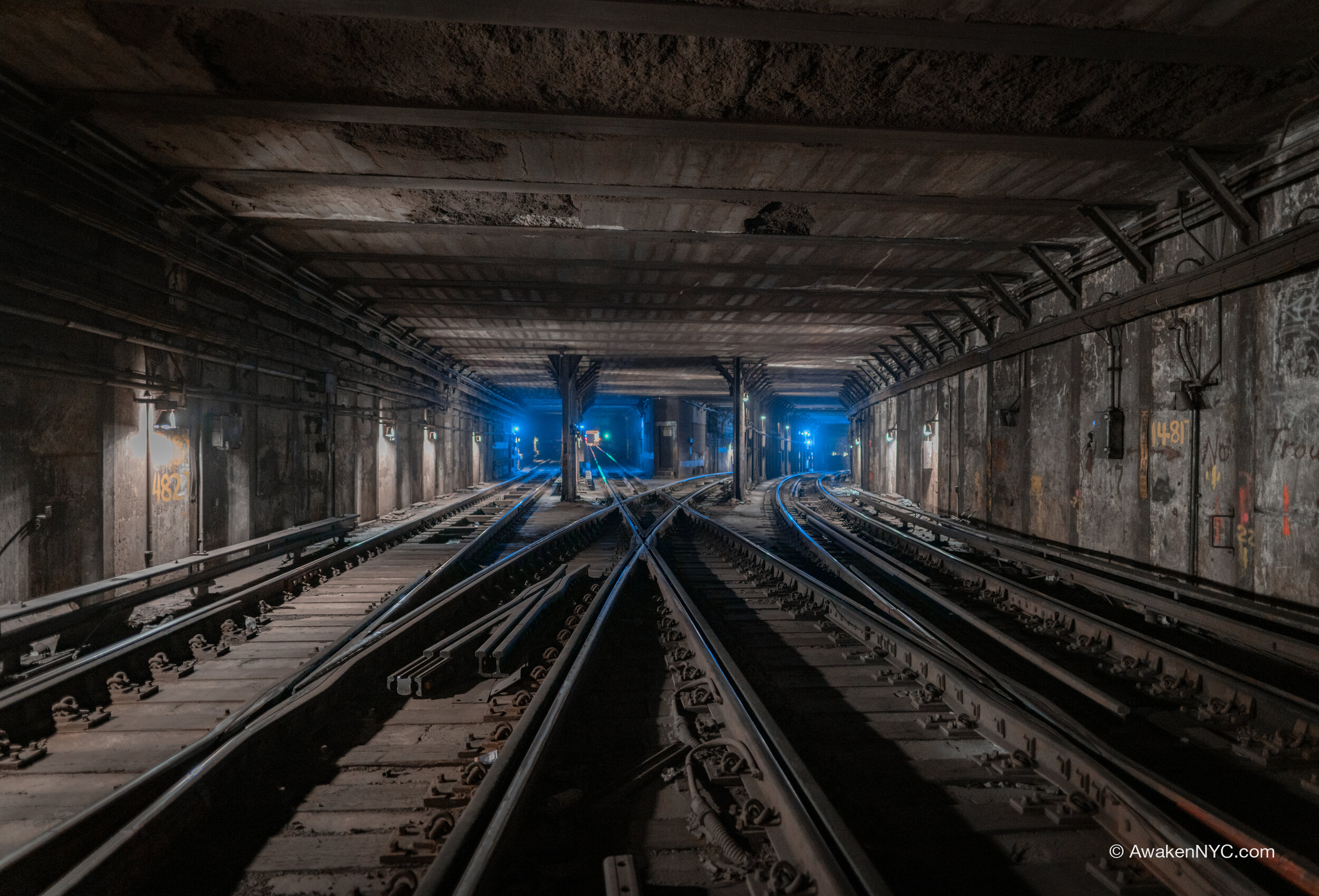The IRT Lenox Ave line was one of the first subway lines built in NYC, built under the same contract as the first NYC subway (Contract I). The Lenox Ave line opened the same year as that subway—1904. Soon after, the under-river tunnel to The Bronx (the Lenox Tubes) opened in 1905.
In order to allow for a Lenox Terminal and Lenox Yard separate from the extension to The Bronx, the 142nd St Junction was constructed. This interlocking allows for the current day (2) trains to go to The Bronx, while the (3) trains continue north to the Lenox Terminal. (While the 145th St station was part of the original construction, the terminal at 148th St wasn’t built for another 50 years.)
142nd St Junction
Similar interlocking at South Ferry
Similar to the interlocking which leads to the new and old South Ferry platforms, the junction at 142nd and Lenox is at grade, so the southbound track from The Bronx crosses over both tracks that continue up Lenox Ave. As a result, when a southbound (2) train is crossing the switch from The Bronx, no trains to/from the Lenox Terminal can pass through the junction until the (2) train has cleared the switch. This creates a bit of a bottleneck, especially during rush hour. The IRT has many inefficient interlockings such as this, leftover from a time when speed was of less consideration and minimizing disruption to the surface level during construction was prioritized (for example, when building a similar junction on Eastern Pkwy in Brooklyn known as Rogers Junction, the IRT configured the switch inefficiently so that the “nice” trees on the surface level wouldn’t need to be torn down).
145th St/Lenox Ave Station
While this junction will likely continue to inconvenience commuters for years to come, it does make a nice place for some photos.

























